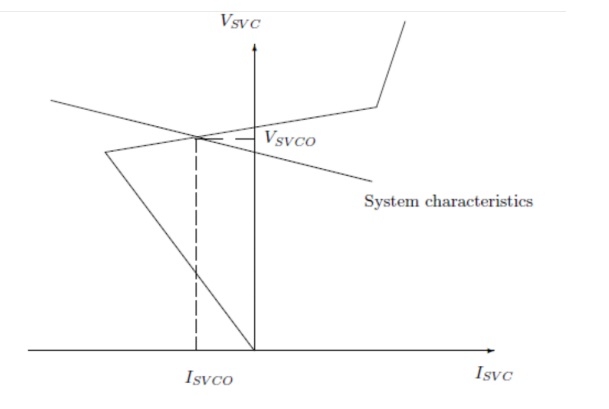Chapter: Flexible Alternating Current Transmission System : Static VAR Compensator (SVC) and Application
Voltage Control by Static VAR Compensator (SVC)
VOLTAGE CONTROL BY SVC
Ø The
voltage-control action can be explained through a simplified block
representation of the SVC and power system shown below. The power system is
modeled as an equivalent voltage source Vs behind equivalent system
impedance Xs as viewed from the SVC terminals.
Ø The
system impedance Xs indeed corresponds to the short circuit MVA at
the SVC bus and is obtained as
Xs
= (Vb / Sc). MVAb in p.u.
Where, Sc
= the 3 phase short circuit MVA at the SVC bus
Vb
= the base line-line voltage
MVAb
= base MVA
The SVC
bus voltage is given by
Vs = VSVC + ISVC Xs
Ø The SVC
current thus results in a voltage drop of ISVC Xs in
phase with the system voltage Vs.
Ø The SVC
bus voltage decreases with the inductive SVC current and increases with the
capacitive current.
Ø The
intersection of the SVC dynamic characteristic and the system load line
provides the quiescent operating of the SVC as illustrated in the below figure.

Characteristics
of the simplified power system and the SVC
Ø The voltage control action in the linear
range is described as

Where ISVC
is positive if inductive and ISVC is negative if capacitive.
Ø It is
emphasized that the V-I characteristics described here relate SVC current or
reactive power to the voltage on the high-voltage side of the coupling
transformer.
Related Topics